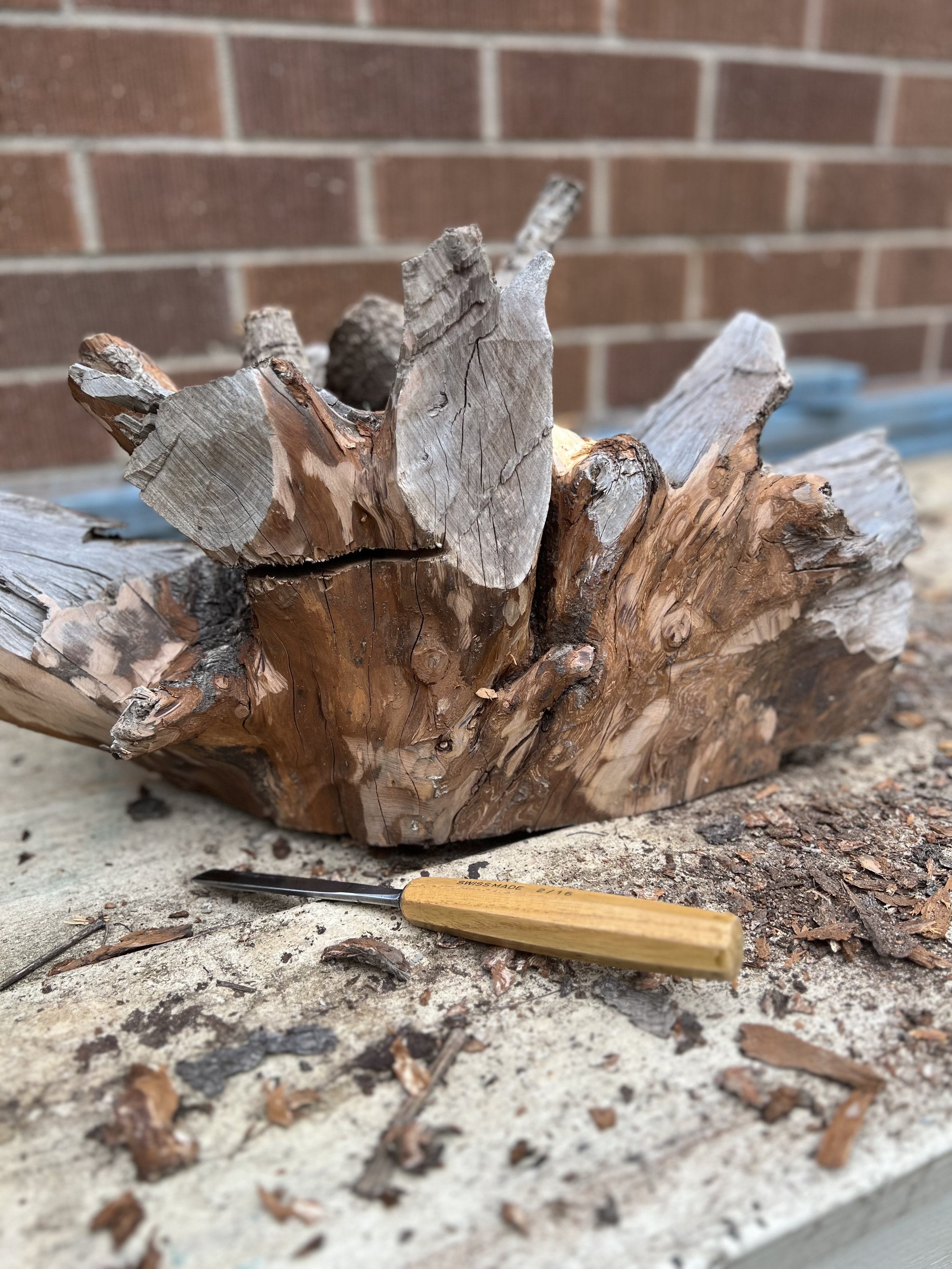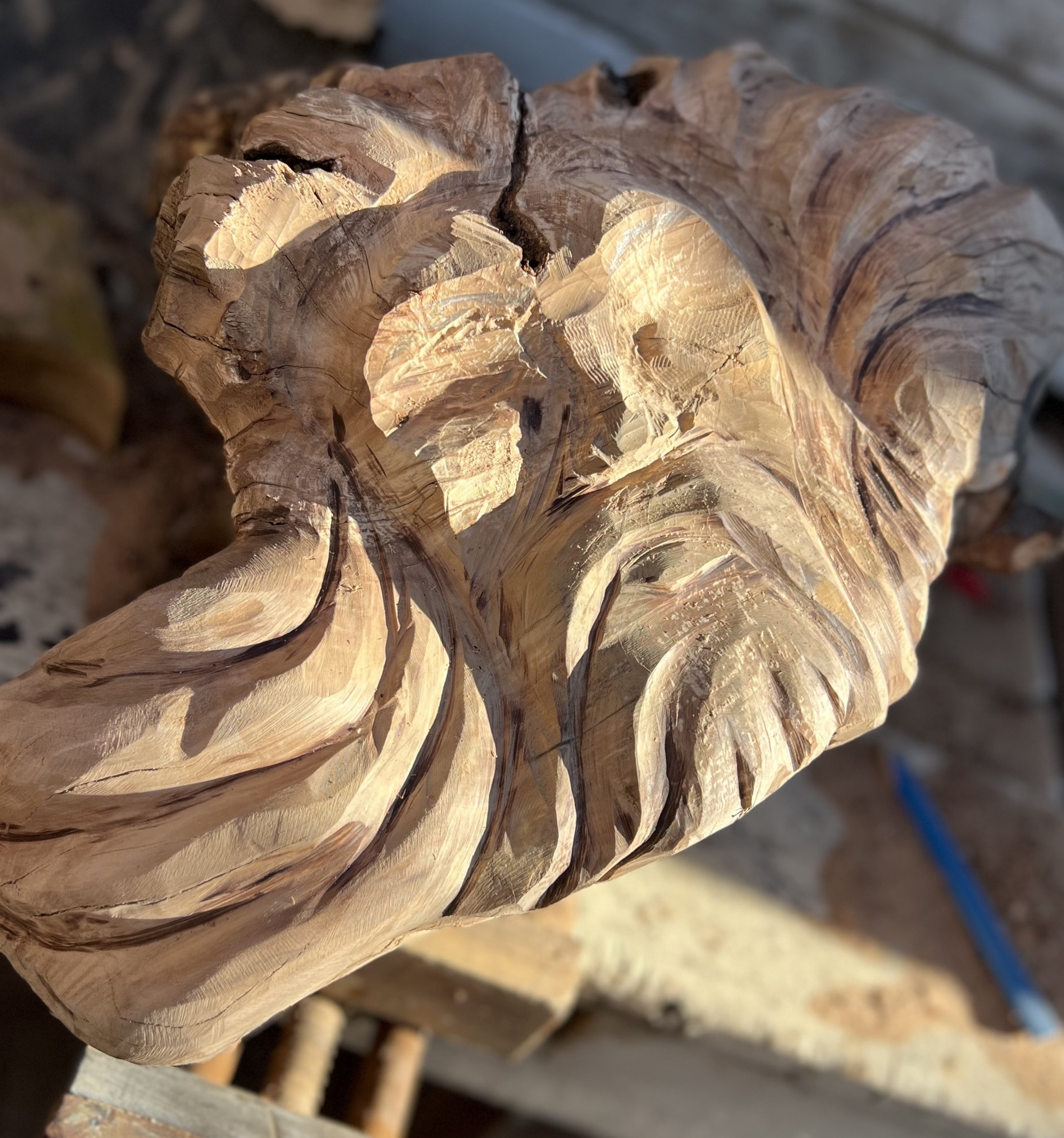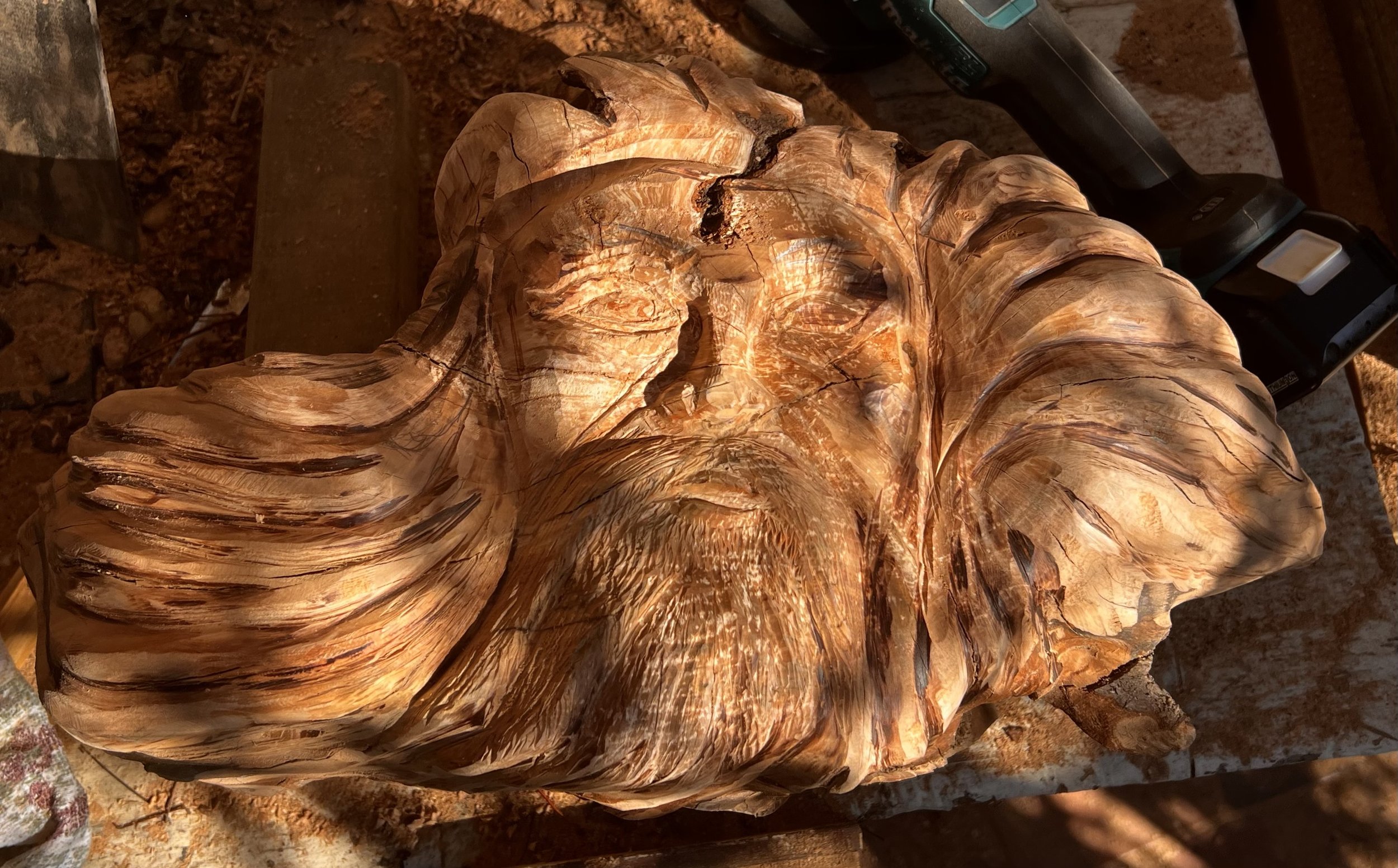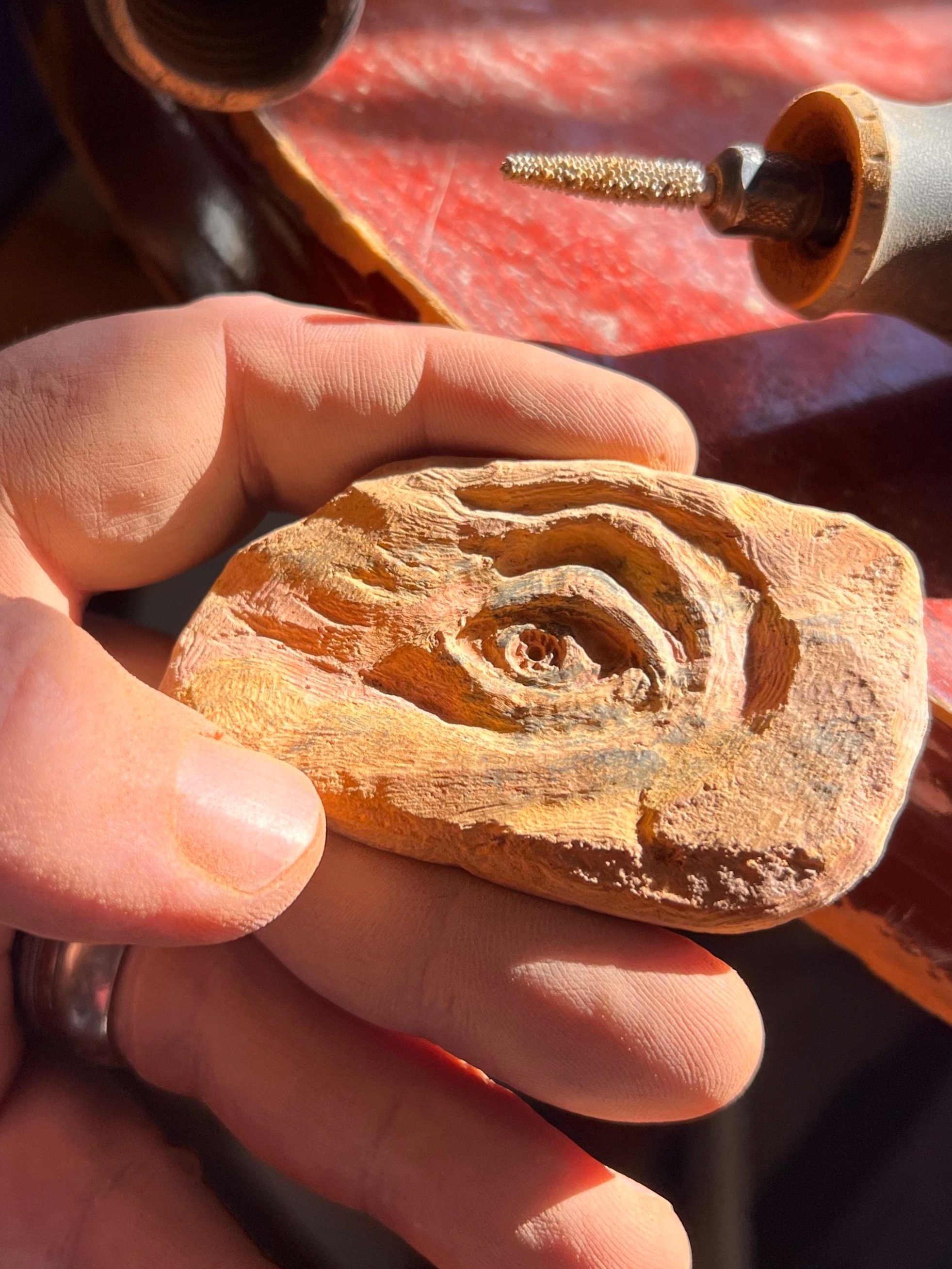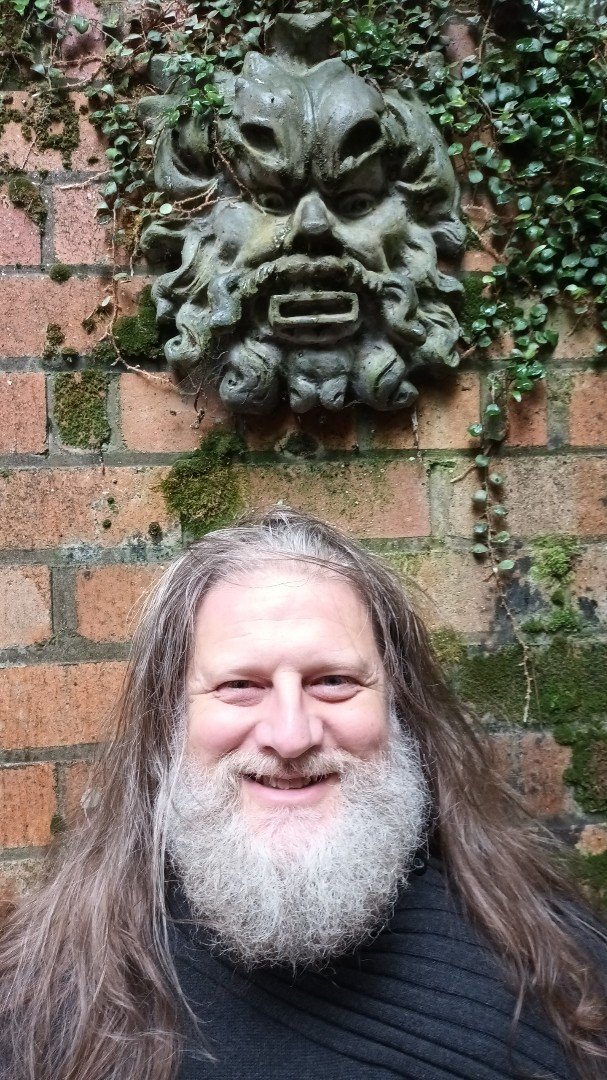The marble not yet carved…
Italian sculptor, painter, architect, and poet of the High Renaissance, Michelangelo, is reported to have said that:
“...the marble not yet carved can hold the form of every thought the greatest artist has.”
This sentiment captures the essence of potential, especially in leadership and personal growth.
As a professional coach, I encounter remarkable individuals—leaders across various sectors—who bravely embark on their journeys toward insight. They recognize that achieving personal goals is intrinsically linked to their ability to collaborate and thrive within relationships.
Professional coaching acts as a lens, revealing the sculpture hidden within raw material.
‘the marble, not yet carved’
Photo by Insightful Path
The Artists’ Wood Shed Retreat, ACT
It’s about discovering your authentic self and connecting with what you genuinely think, know, and value. This clarity is transformative; it enables you to bring your best self to every situation.
‘emerging from the great unconscious’
Photo by Insightful Path
The Artists’ Wood Shed Retreat, ACT
Yet, a common question arises:
“how do I know which approach to take for the best possible outcome? ”
The truth is, you don’t. But frameworks exist to guide you on this path.
One such framework is Dave Snowden’s Cynefin framework, developed in 1999 to help organizations navigate complexity. The Welsh word ‘cynefin’ (kuh-NEV-in) means ‘habitat’ or ‘being accustomed to something,’ and it elegantly categorises decision-making contexts into four domains:
Simple/Clear: This quadrant contains the ‘known knowns’. In these situations, you know the rules. You know situation. The situation is stable… and you will clearly see the result/s of your decisions.
These are the easiest situations to be aware of what is happening, accept the facts of what is happening, and choose how you want to respond.
This context is where you can do your best practice, and make ‘best practice’ decisions.
‘awareness and acceptance’
Photo by Insightful Path
The Artists’ Wood Shed Retreat, ACT
2. Complicated: This quadrant contains the ‘known unknowns’. You have some of ‘the picture’, but still have some gaps in knowledge, yet you know where these gaps are.
As an amateur artist, I use art to practice connection with awareness of what is already in front of me. To practice the acceptance of this, even when there are ‘faults’ in the material, or context in which I am working. And, to practice the awareness and acceptance of this to inform my insightful path, my choice of decision and behaviour.
And there are times, when I know that I must develop certain areas of my identity, of ‘who’ I am, if I am going to be able to achieve all that am here to achieve. It may be learning a skill (such as entrepreneurialism), or it may be a part of my ‘story’ - my narrative of how I came to be the way I am.
In the complicated spaces of our lives, we know what needs to be done, we just don’t know how to do it yet.
‘discovering a way to give insight’
Photo by Insightful Path
The Artists’ Wood Shed Retreat, ACT
3. Complex: In complex environments, while we know we don’t know enough, we also know that no longer do we even know what area we need to build on. This is the land of the unknown unknowns.
The insightful path, the path to success when in the realm of the unknown unknowns, is to look for the emerging patterns of meaning, discover what responses are created by your actions, and appropriately respond to these as they arise.
‘within the realm of the unknown unknowns’
Photo by Insightful Path
The Artists’ Wood Shed Retreat, ACT
4. Chaotic: Within this domain, cause and effect are not clear. The most appropriate course of action within chaos is to do something. Anything. You must ‘act’, sense what occurred from that action, and then respond accordingly. Responses in crisis do not have to be the perfect response, in fact, there is rarely enough information to form a response with any sense of certainty that it will be appropriate. Being aware of this, and accepting it, enables you to change the metric for success in crisis. ‘Success’ then shifts from a the outcome (an ‘ideal’ resolution, for example), to the process in which an outcome is made (the decision making steps you take). It helps to look at the journey rather than the destination in crisis.
Snowden, creator of Cynefin, recommends that when you are in chaos, you probe-sense-respond. He says:
“In the chaotic domain, a leader’s immediate job is not to discover patterns but to staunch the bleeding. A leader must first act to establish order, then sense where stability is present and from where it is absent, and then respond by working to transform the situation from chaos to complexity, where the identification of emerging patterns can both help prevent future crises and discern new opportunities. Communication of the most direct top-down or broadcast kind is imperative; there’s simply no time to ask for input.”
There is a fifth domain within Snowden’s model, that of Confusion - the most appropriate response of which is obviously to clearly identify what parts of the decision belong to what parts of the above four domains.
‘a work in progress’
Photo by Insightful Path
Mt Wilson gardens
One of the things that walking an insightful path with a professional coach can bring you, is the realisation that your best self is constantly emerging, and you can use the practice of uncovering your identity to help you to thrive in your work and in your life.
Reach out if you are interested in becoming the greatest artist of your life - creating the best art of your life - that being creating an insightful path for your best self to thrive in.

